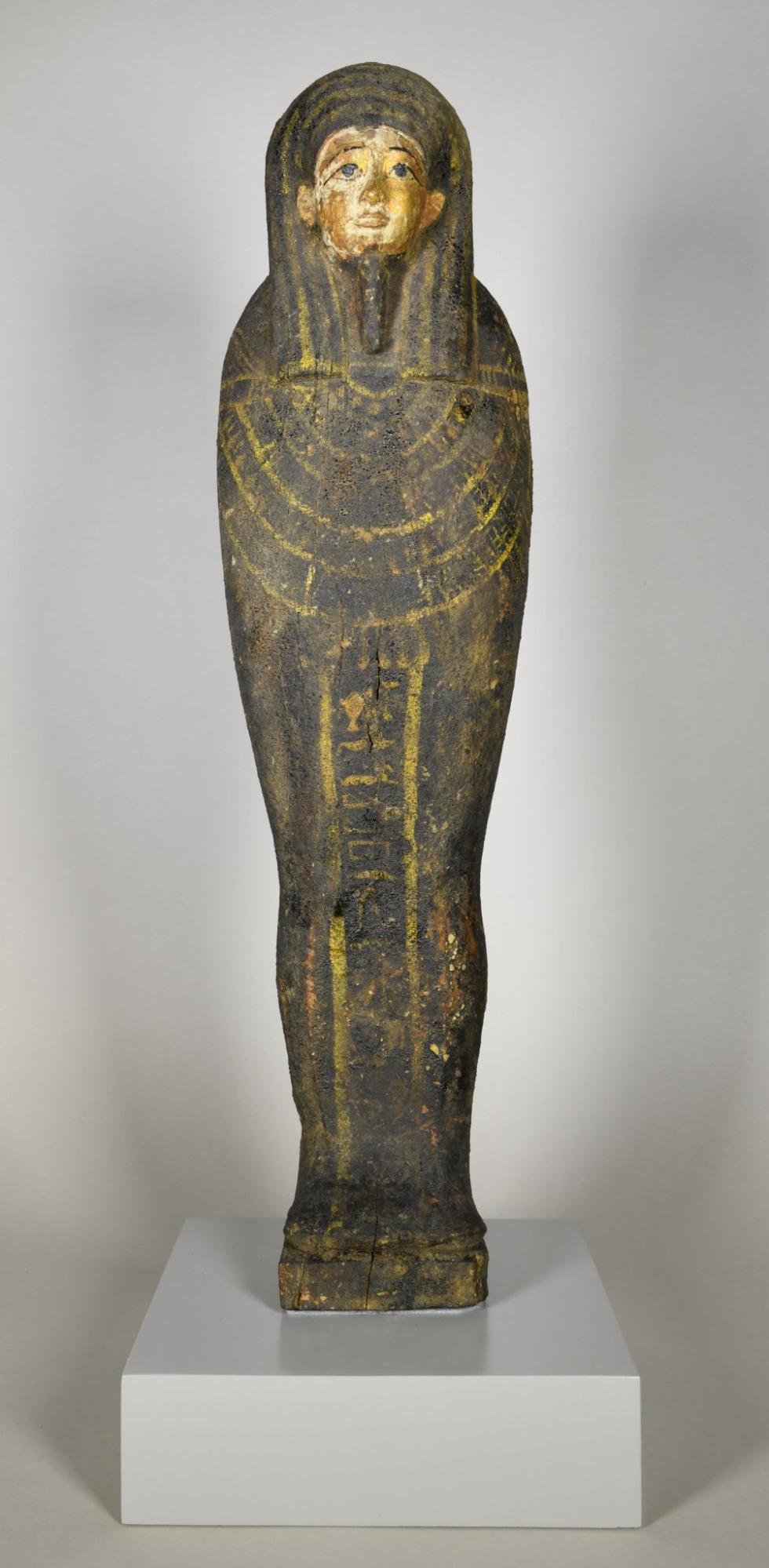This wooden mummiform figure of Ptah-Sokar-Osiris is commonly found in elite burials from the Third Intermediate period onward. The god represents one of the most identifiable transitions in ancient Egyptian religious worship and reached the peak of popularity during the Late Period.1 Ptah-Sokar-Osiris combined three deities associated with rebirth into a single god. Ptah, a creator god from the Memphite region, brought life into existence through the spoken word. Sokar, a solar god, assisted the sun god Re through the twelve hours of night traveling from west to east through the underworld. As a result, Sokar became associated with the transformation of the deceased during their journey toward rebirth. Osiris was the archetype of death and resurrection and represented the transfiguration of the deceased into a divine being.
The figure’s divinity is indicated by the gilded face representing the golden skin of the gods. The striated tripartite wig and plaited divine beard are delineated by carefully drawn lines of yellow paint. The figure’s shape mimics a fully wrapped mummy that obscures the arms but suggests the legs and feet. The feet rest on a plinth, which may have attached to a larger base in the past. Fastened at the shoulders with falcon terminals is a usekh or broad collar that includes floral and geometric motifs invoking the funerary sphere. The inclusion of a Ptah-Sokar-Osirian figure in a burial would evoke the cyclical process of birth, death, and resurrection that the deceased hoped to follow.
TDB
-
Nuzzolo, Carlo Rindi. 2013. “An Unusual Group of Ptah-Sokar-Osiris Figures Some Reflections on Typology and Provenance.” Journal of the American Research Center in Egypt 49: 193–204. http://www.jstor.org/stable/24555427. ↩︎
Bibliography
- Nuzzolo 2013
- Nuzzolo, Carlo Rindi. 2013. “An Unusual Group of Ptah-Sokar-Osiris Figures Some Reflections on Typology and Provenance.” Journal of the American Research Center in Egypt 49: 193–204. http://www.jstor.org/stable/24555427
